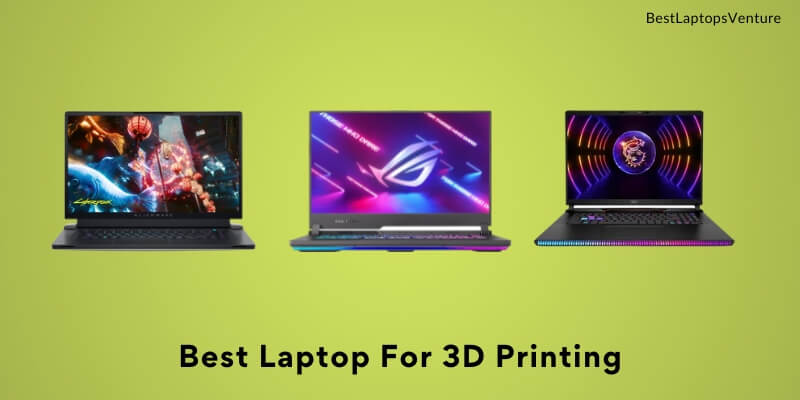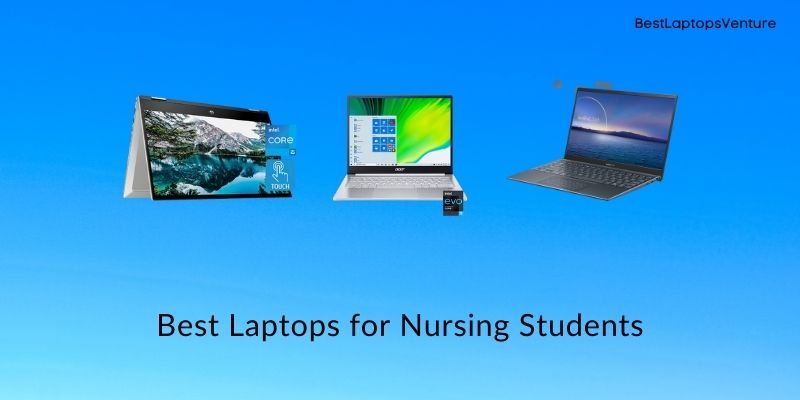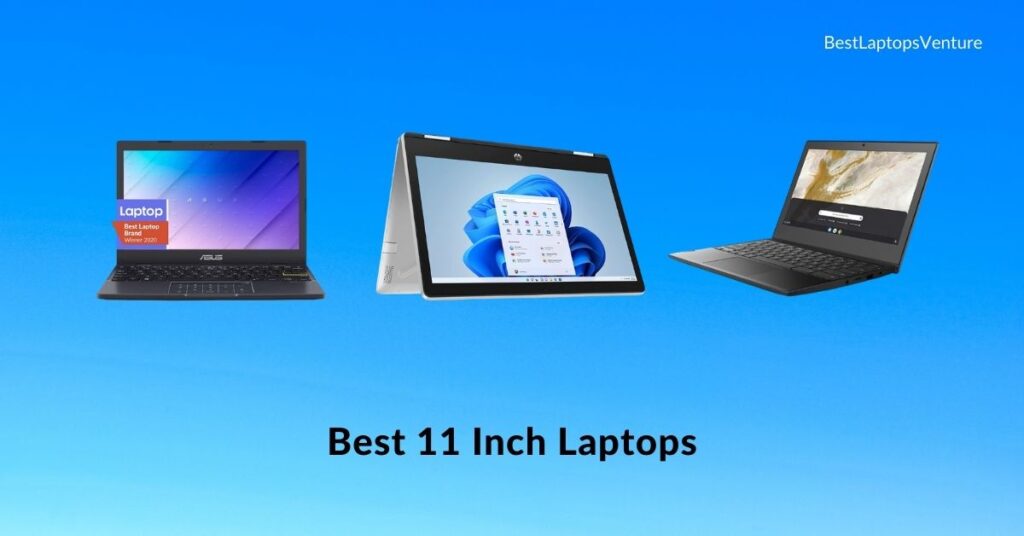
Greetings! Welcome to the ultimate guide to finding the best laptop for 3D Printing in 2024. If you’re interested in 3D Modeling and Printing, you know that the right laptop can make a big difference in your creative journey. Don’t worry, I’ll support you well!
I spent 37 hours researching and testing seven of his top laptops, evaluating their performance, processing power, graphics capabilities, and overall value for money. It’s not easy, but we want you to receive as much reliable advice as possible.
In this article, you will learn about the laptop that surpasses other laptops in the world of 3D Printing. These laptops have been carefully selected to provide a tremendous 3D rendering experience at an affordable price.
You don’t have to spend thousands of dollars on a laptop. With any of these options, you can bring your 3D designs to life in the comfort of your home.
Ready to find the perfect laptop companion for 3D Printing and rendering? Dig deeper into powerful machines that will take your creativity to new heights!
Top 9 Best Laptop For 3D Printing in 2024 [Recommended]
Our selection includes laptops for beginners, professionals, and everyone in between. To find the laptop that fits your needs, we considered features such as processing power, graphics capabilities, storage, price, and portability. Let’s find out the Best Laptop For 3D Printing.
1. ASUS Zenbook Pro 14 Duo: The Overall Best Choice for 3D Printing
[amazon box=”B0BZ63RTZD”]
If you’re an expert in the 3D printing field, you know the importance of efficient machinery. ASUS ZenBook Pro Duo 14 hits the ring as the perfect device to bring your creative visions to life. This laptop has processing power, good memory, and graphics capabilities that can handle complex 3D tasks with ease, making it a top pick for 2024.
The ZenBook Pro Duo’s most notable feature is its dual screens, which provide a unique and efficient workspace. This secondary display allows you to manage toolbars, context, or communications without cluttering your primary print area. It’s like a dual-monitor setup, but in a portable format that’s a game-changer for efficiency and workflow organization.
Moreover, ZenBook is equipped with a powerful 13th-generation Intel i9-13900H processor and ample 32 GB of LPDDR5 RAM, which is enough to handle resource-intensive tasks.
High-definition 3D Printing and modeling, rendering complex scenes, and even virtual reality applications are a breeze for this beast.
You don’t have to worry about storage, as this ASUS laptop comes with a 1TB PCIe SSD. This means faster loading times for his extensive library of textures and 3D models, and plenty of space to save your projects.

Moreover, the dedicated NVIDIA® GeForce RTX 4060 graphics card ensures smooth rendering and instant previews. Ray tracing capabilities take rendering realism to a new level.
Despite the impressive spec sheet, there are some small compromises. The ZenBook Pro Duo, on the other hand, weighs 9.8 pounds, making it a bit heavier than your average laptop, but its features and performance make it a worthwhile compromise.
Additionally, the laptop does not come with a CD-ROM drive. However, with the rise of digital software distribution and cloud storage, this is no longer an issue for most professionals.
Simply put, the ASUS ZenBook Pro Duo 14’s high performance and innovative dual-screen design make it an unparalleled companion for 3D printing and rendering professionals. It’s a comprehensive and powerful tool that meets and exceeds your creative work needs.
2. Apple MacBook Pro Laptop M2: The Best MacBook for 3D Printing
[amazon box=”B0BSHDT7F5″]
As 3D artists and animators, we often look for a laptop that can serve our creative needs in a powerful and efficient way. This makes the 2024 Apple MacBook Pro an excellent tool for 3D artists and animators. This machine is designed to handle the most complex 3D printing tasks with ease.
The 2024 Apple MacBook Pro is powered by the advanced M2 Pro chip with a powerful 12-core CPU and 19-core GPU to easily handle the complex demands of software like Blender, Maya, and Adobe Creative Suite. This means faster rendering, smoother animation playback, and a seamless overall design experience.
Additionally, the 1TB SSD provides enough space to store large project files and makes multitasking easy. For memory-intensive tasks, we recommend the M2 Max version of the MacBook Pro with up to 96GB of internal memory.
Additionally, the 14.2-inch Liquid Retina XDR display sets a new standard for visual brightness. Deliver the ultimate dynamic range and over 1000 nits of brightness to accurately reproduce color and detail to ensure your work looks its best.

Another notable feature of the MacBook Pro 2024 is its seamless integration with other Apple devices. Improve work efficiency by optimizing your workflow. For example, he can quickly transfer projects from his MacBook Pro to his iPad or iPhone for editing on the go.
On the other hand, 16 GB Unified memory may not be enough for very intensive tasks. Also note that this laptop has a higher price compared to some competitors, reflecting its high-quality features and performance.
Finally, Mac OS supports a variety of software, but not all. We recommend using an additional external hard drive or cloud storage solution to increase the security of your data.
Simply put, the 2024 Apple MacBook Pro is an excellent device that meets the unique needs of 3D artists and animators. From powerful performance to beautiful displays and compatibility with other Apple devices, it’s a worthy investment for creative possibilities.
3. ASUS ROG Strix G16: High-Performance Laptop for 3D Printing
[amazon box=”B0BV8H8HVD”]
If you are a rendering artist and gamer, ASUS ROG Strix G16 is an unbeatable laptop. Designed for the diverse needs of 3D printing professionals, this dynamic laptop has everything that 3D printing enthusiasts and hardcore gamers need.
Powered by a 13th Gen Intel Core i7-13650HX processor running at 4.9GHz, this laptop can easily handle processor-intensive tasks like architectural visualization, 3D animation, and video game development.
High-speed 16GB DDR5 SODIMM RAM (Expandable up to 64GB) enhances multitasking capabilities, allowing you to work on multiple design software without interruption.
Additionally, the excellent NVIDIA GeForce RTX 4060 8GB GDDR6 graphics card ensures best-in-class visual performance. Whether you’re creating an interior design plan or developing an augmented reality environment, the power of this GPU ensures smooth rendering and lossless instant previews.
Additionally, this ASUS laptop features a 16-inch Full HD+IPS display with a 165Hz refresh rate. This immersive display enables finer detail, more accurate color rendering, and smoother movement, which is essential for improving 3D Printing and animation.
Additionally, seamless connectivity options such as Wi-Fi 6E, Bluetooth 5.2, and Ethernet LAN (RJ-45) facilitate efficient data transfer, making your workflow smooth and uninterrupted.
It has an ample 512GB PCIe NVMe SSD storage, but no optical drive. However, this is not a big issue as digital cloud storage is a more modern and flexible solution.

Perhaps the only challenge is weight. At 5.51 pounds, this laptop isn’t the best to carry. However, given the powerful specs, this is a compromise for top-end performance.
In short, the ASUS ROG Strix G16 offers an attractive package for 3D printing and rendering professionals. From mighty processing power to outstanding performance and superior multitasking capabilities, it’s a great investment for creative possibilities.
4. HP Victus 16: The Best Bundle for 3D Printing
[amazon box=”B0CGRGFWBW”]
For creators on a budget, finding a laptop suitable for 3D Printing at an affordable price remains a dream. Considering that you need an affordable yet powerful laptop, we recommend choosing the HP Victus 16.
We know that HP is an expert in providing affordable laptops. This HP Victus 16 is no exception, with a powerful 5.1GHz, AMD Ryzen 7-7840HS processor, 16 MB L3 cache, 8 cores, 16 threads, 16GB DDR5 RAM, and 1TB PCIe NVMe M.2 SSD storage. The price is approximately $1500.
Even considering this laptop has a large storage capacity or RAM, it’s still a good option for those looking for a laptop with basic to advanced rendering capabilities. If you’re a young professional, the HP Victus 16 will be a great companion as you progress in your career.
As a professional graphic designer, I think the 16-inch QHD 240Hz anti-glare display is the best choice for his 3D animation and graphic design work. Victus 16 is also slim and lightweight, making it perfect for working on the go.
That being said, this laptop isn’t perfect. If you’re looking for the GPU performance that NVIDIA GeForce RTX 4060 Graphics provides, this isn’t the ideal choice.
However, when I tested it, it was fast enough for 3D Printing, basic rendering, and modeling tasks. If you are a professional animator or need to render large-scale animations, you should spend a little more money on more powerful equipment.
5. MSI Katana 15: The Best Mobile Workstation for 3D Printing
[amazon box=”B0BT3FKZ3N”]
When it comes to 3D Printing, a powerful laptop is essential. MSI Katana 15 2024 is equipped with the latest 13th-generation Intel Core i7-13620H processor with significantly improved processing power.
Architects, video game designers, or other professionals who work with 3D Printing, modeling, and rendering will appreciate its ability to seamlessly process complex 3D models and animations. But it was surprisingly quiet!
MSI Katana 15 also features a 15.6-inch FHD IPS display with a 144 Hz refresh rate, delivering a smooth, vivid, and immersive visual experience necessary for professionals working in graphic design, architectural visualization, or game development. Masu.
Inside, an NVIDIA GeForce RTX 4070 graphics card with 6 GB of dedicated memory ensures stunning visuals and supports real-time ray tracing, making it perfect for animated films, virtual reality development, or interior design planning. It’s ideal for anyone working on it.
Storage is fine, with a 1TB SSD and 16GB DDR5 RAM, allowing you to store large files and multitask with ease. This means you no longer have to compromise on the quality or complexity of your 3D projects.
The MSI Katana 15 has plenty of power and performance, but its 8.16-pound weight may be a concern for those who prefer a lightweight device.
Still, the trade-off between good performance and build quality justifies its weight. It is still acceptable for a device with this level of hardware.

Additionally, although it doesn’t come with a touchscreen, a high-quality keyboard, and many USB ports provide various input and connectivity options that many 3D artists and engineers will find convenient.
In short, MSI Katana 15 is a robust device for 3D modeling and rendering professionals. A powerful combination of hardware simplifies difficult tasks and increases productivity.
Whether you’re creating virtual reality spaces or working with CAD designs, this laptop will help you reach new heights of creativity.
6. Razer Blade 14: Best Ryzen Laptop for 3D Printing
[amazon box=”B0C54DR6Y2″]
Equipped with a powerful GPU and CPU, the Razer Blade 14 gaming laptop is an excellent choice for 3D printing professionals. This machine easily meets a wide range of computing needs for software such as AutoCAD, Blender, and 3DS Max, providing an unparalleled user experience.
First, the latest NVIDIA GeForce RTX 4070 GPU delivers incredible graphics processing power that’s up to 70% faster than previous models. This power, combined with his 240Hz QHD display, ensures a responsive and detailed display, a boon for 3D professionals who demand perfect pixel accuracy for their models.
Plus, desktop connectivity with HDMI 2.1 ports, Thunderbolt 4 USB-C, and 2.5G Ethernet ports means you don’t have to compromise on accessories or data transfer speeds.
Additionally, the new AMD Ryzen 9 7940HS processor with Turbo Boost up to 5.2GHz provides unparalleled processing power.
Coupled with the fastest 32GB DDR5 5600MHz RAM, the Razer Blade 14 is 50% faster than its predecessor, ensuring a seamless experience when running apps and performing demanding tasks like complex 3D models and Printing. Masu.
Another notable feature of the Razer Blade 14 is its advanced next-generation vapor chamber cooling system. This innovative technology, combined with a quiet fan and increased fluid capacity, ensures optimal performance and cools the system even under pressure.
This is especially important for 3D professionals. The work of 3D professionals is often taxing on computer resources and causing small machines to overheat.
Simply put, the Razer Blade 14 is the best laptop for 3D printing professionals. Its solid performance, impressive visual features, and cooling system make it worth the investment.
However, professionals must consider the memory requirements of their specific tasks to ensure the machine meets all their needs.
7. Lenovo Legion Pro 5: A High-configured Laptop for 3D Printing
[amazon box=”B0CJX5DZFJ”]
Immerse yourself in the world of multimedia content creation with unparalleled precision and speed with Lenovo Legion Pro 5. This laptop far exceeds standard expectations regarding 3D Printing, especially thanks to its advanced DDR5 memory.
For professionals involved in 3D modeling and rendering, the Legion Pro 5’s powerful AMD Ryzen 7-7745HX Processor allows you to run your 3D software extremely smoothly. Additionally, the NVIDIA GeForce RTX 4070 GPU features 8 GB GDDR6 and a 1035 MHz boost clock, and is optimized to smoothly render complex graphics and animations.
Equipped with massive 1TB PCIe SSD storage, space is never an issue, and you’ll have plenty of space to store your projects and assets. 32GB DDR5 RAM (upgradable to 64GB) reduces load times, so you can focus on creating without worrying about lag or lag.
Plus, the 16-inch WQXGA IPS, 165Hz display shows your work in great detail. This VESA monitor supports HDR 500 and delivers 100% DCI-P3 color accuracy, ensuring your work looks as vivid as you imagined.
The Lenovo Legion Pro 5 offers excellent performance but is heavy at 8.98 pounds. This may be inconvenient for people who want to use a lightweight laptop for travel or presentations.
But considering its powerful processing power and professional features, it’s usually worth the trade-off. Additionally, it doesn’t come with an optical drive, so if you want to use physical software or data discs, you must want to consider an external solution.
In short, the Lenovo Legion Pro 5 is a powerful laptop designed to meet the needs of professionals in the field of 3D Printing and rendering.
Combine powerful computing power with a high-fidelity display to ensure your work runs smoothly and looks great. It may be a little heavier, but its advanced features make it a trade-off worth considering.
8. Alienware M18: A Budget-friendly Laptop for 3D Printing
[amazon box=”B0CGT4F3K8″]
Introducing the Alienware M18, a revolution in laptops designed for 3D Printing and rendering. The unique combination of features, performance, and affordability makes it an excellent choice for professionals who need the best technology. In particular, it stands out for its superb combination of memory and RAM, and its specifications put it at the top of our recommendation list.
The Alienware M18 is equipped with a powerful 13th-generation Intel Core i7-13700HX, a 14-core processor with frequencies up to 5.0 GHz, which allows your 3D modeling software to run smoothly even when working with complex high-poly printing models or complex models or rendering task.
More importantly for 3D artists and animators, the Raider has an impressive 16GB DDR5 RAM and a 1 TB SSD. The combination of large amounts of memory and fast read/write speeds allows you to efficiently multitask, browse heavy software quickly, and work with multiple models without lag.
Additionally, his NVIDIA GeForce RTX 4070 graphics card with 8GB of dedicated video memory delivers accurate colors, crisp details, and smooth playback for a better viewing and editing experience. The large 18-inch FHD IPS display has a 165Hz refresh rate for a great viewing experience.
However, with a weight of 8.9 pounds and an 18-inch screen, the Alienware M18 may not be the most portable solution for those who are always on the go. However, it offers desktop-like performance, which may be worth the trade-off.
Additionally, it comes with an RGB backlit keyboard, but professionals who often work in dark environments may find the lighting insufficient. We recommend purchasing a dedicated desk lamp for comfortable and accurate writing.
Overall, the Alienware M18 is a true powerhouse for artists, architects, and 3D animators. The combination of superior memory and RAM, best-in-class processing, and graphics capabilities make it the ideal device for 3D Printing, modeling, and rendering professionals.
This may not be the most portable option, but the performance it provides justifies the trade-off.
9. Acer Predator Helios 16: Best Color Calibration for 3D Printing
[amazon box=”B0BVN3X6Q6″]
Next, we introduce the Acer Predator Helios 16. This is a great solution if you are interested in 3D Printing and need a laptop that can efficiently handle your work needs. Best of all, this performance beast’s RGB-backlit keyboard is just a bonus. Let’s take a closer look at its salient features.
Overcoming the complex challenges of 3D modeling and rendering requires unstoppable strength. The Helios 16 accomplishes this with a 13th Gen Intel Core i7-13700HX Processor. With a base clock of 3.5 GHz and an incredible boost of up to 5 GHz, you can handle your most significant projects. This means you don’t have to compromise on model detail or scale.
Moreover, you can enjoy vivid images on the 15.6-inch 165Hz FHD IPS display. Additionally, Its dedicated NVIDIA GeForce RTX 4070, 8GB VRAM graphics card perfectly renders his 3D models with deep detail and fantastic color accuracy.
Plus, with its massive storage capacity with 1TB PCIe Gen 4 SSD (2 x PCIe M.2 Slots), you never have to worry about space for your projects. Additionally, the generous 64GB of RAM ensures smooth multitasking, allowing you to run complex software and switch between tasks with ease.
In terms of connectivity, various ports, such as USB-C 3.2 with DisplayPort, Thunderbolt 4, and HDMI 2.1, facilitate seamless data transfer and display capabilities. Wi-Fi 6 and Gigabit Ethernet ensure fast and stable internet connectivity, which is important for cloud-based applications.
Still, the Acer Predator Helios 16 isn't without its limitations. For one, the laptop weighs 5.73 pounds, which can create mobility issues for busy professionals. However, portable hard drives can alleviate this concern.
Second, while 6 hours of battery life may seem short for long work sessions, you can overcome this problem by setting up a dedicated workspace with access to a power source or additional chargers. Masu.
Although it has a few quirks, the Acer Predator Helios 16 is a solid laptop designed for [professionals] who need high-performance 3D Printing and modeling.
Equipped with a superior processor, large storage capacity, immersive graphics, and a unique RGB backlit keyboard, it meets your professional needs.
How we tested the best laptops for 3D Printing
We know that a great 3D-printed laptop is about more than specs on paper. Our testing approach is, therefore, a practical and rigorous evaluation of selected laptops.
Step 1: Actual test
We distribute carefully selected laptops to professionals in various fields. They use these laptops for daily tasks such as creating animated films, architectural visualization, interior design planning, video game development, product prototyping, and CAD design.
Step 2: Benchmark
It also runs benchmark tests to evaluate the laptop’s raw performance in various situations, such as rendering complex 3D prints.
Step 3: Feedback and ratings
Finally, we collected feedback from our expert colleagues. This practical feedback and test results formed the basis for the final selection.
Our aim is to provide comprehensive, reliable, and relevant advice. We believe that by understanding your needs and conducting extensive testing, we can help you make an informed decision about which laptop is best for 3D Printing.
How to choose the best laptop for 3D Printing?
Simply put, when it comes to hardware, you want as much power as possible. Laptops will need more RAM and a powerful CPU to ensure they can handle more intensive 3D printing applications such as Blender and Maya.
When purchasing, you also need to consider whether you want to use Windows or macOS. All of the above options can be handled by the 3D software of your choice.
Windows laptops have become very strong in this field as well recently, thanks to the launch of his RTX Studio by Nvidia. RTX Studio is a platform designed to showcase laptops that meet the criteria for serious creative work.
In short, these laptops are ideal for anyone working with 3D animation. Great acting. Graphic design, video editing, and photography software.
Laptops that meet RTX Studio’s performance standards must have at least an Intel Core i7 CPU, 16 GB of RAM, 512 GB SSD, and a GeForce RTX 4060, Quadro RTX 4000, or Titan GPU. Required screen resolution is at least 1080P.
Therefore, the RTX Studio badge clearly indicates that the laptop will perform his 3D work. Of course, you also have the option of looking for a gaming laptop, since the demands of running AAA video games can equate to creating 3D content.
The latest cards worth looking at are the NVIDIA GeForce RTX 40 series (specifically the 4060 and 4090), but if you’re on a lower budget, the 30 series cards may offer a better balance between price and performance.
If you prefer building with Apple hardware, the power offered by the MacBook Pro series makes things a little easier.
What hardware is best for 3D Printing?
When considering which laptop to buy for your 3D projects, the most important factors are CPU, GPU, RAM, and screen size. Here’s a quick overview of what to look for in each category.
Determine your specific needs
Before jumping into the sea of options, it’s important to explain your needs. Are you a 3D artist creating detailed animated movies or an architect visualizing complex structures? Every profession and use case has unique requirements.
The key is to understand what you’re most likely to use your laptop for and make decisions based on those tasks.
CPU
3D Printing requires a powerful 64-bit multi-threaded processor. Intel CPUs are best suited for single-threaded tasks compared to AMD CPUs, which are better suited for multi-threaded tasks.
If most of your rendering is done “offline” and you primarily work with large, complex scenes, you will need a high-performance CPU.
Graphics processor
A dedicated graphics card is essential for 3D projects. You can also buy an XPU that combines a CPU and GPU, but it won’t be as powerful as two dedicated cards.
Many artists love his NVIDIA cards, but they are expensive, especially the newer 4000 series. If you want to focus on instant interactive GPU rendering, it’s best to go with the best graphics card you can buy.
RAM
A laptop with at least 16 GB is ideal for a smooth working experience, especially if you are into multitasking. Making sure it’s DDR5 reduces power consumption and increases bandwidth.
Screen
Much of this comes down to personal preference. I prefer to use as large a screen as possible, preferably a 17-inch laptop screen, so that I can navigate these complex designs as easily as possible.
However, if you want to extend your screen to other monitors, you can avoid using very small screen sizes since you know you won’t use them for this kind of work.
Storage
When it comes to storage, his SSD (Solid State Drive) is a better choice than HDD (Hard Disk Drive). It’s faster, resulting in faster startup times, faster file access, and better overall performance.
Aim for a laptop with at least a 512GB SSD, such as the 2024 Apple MacBook Pro. However, if you regularly work with large files, consider upgrading to his 1TB or 2TB models, such as the Razer Blade 17 or MSI GE76 Raider.
Display
High-resolution monitors are essential for 3D Printing, modeling, and rendering professionals. A resolution of 1920×1080 (Full HD) should be the baseline.
Consider a 4K Ultra HD monitor for detailed work. Pay attention to color accuracy and brightness, especially in graphic design and advertising.
In our tests, Asus ROG Strix G17 GS713 and Asus Zenbook Pro Duo 15 proved to be the laptops with the best display quality.
Battery Life
If you’re always on the go, battery life is an essential factor. Look for a laptop with at least 8 hours of battery life under normal workloads. You should choose the Apple MacBook Pro 2024, which has an impressive battery life of up to 18 hours.
Portability
If your job requires mobility, consider the weight and size of your laptop. Note that the balance between portability and performance is important.
Powerful laptops such as 3D printing laptops are often heavy, but there are also lightweight options like the Dell Inspiron 7000 Series 7420 and Apple MacBook Pro 2024.
Budget
Finally, consider your budget. The price will be higher for high-end specs. However, as a professional, remember that this is an investment in your career.
Therefore, if you need more rigorous usage, we recommend choosing a high-end laptop such as the ASUS ZenBook Pro Duo 15.
However, if you’re on a budget, laptops like the Apple MacBook Pro 2024 or the Dell Inspiron 7000 Series 7420 are good options.
By focusing on these critical areas, you can find the right laptop for your 3D Printing, modeling, and rendering needs.
FAQs on Best Laptop For 3D Printing
What specs of laptop do I need for 3D Printing?
3D Printing requires a laptop with a powerful processor (Intel i7 or AMD Ryzen 7), a high-end GPU (such as Nvidia’s RTX series), at least 16 GB of RAM, and a fast SSD for storage.
A high-resolution screen is also recommended. When it comes to operating systems, you can choose between Windows 10/11, Windows Server 2024, or Linux operating systems.
What specifications do I need for my laptop for 3D Printing?
When choosing a laptop for 3D Printing, focus on a powerful multi-core processor (such as an Intel Core i5 or AMD Ryzen 5), at least 8 GB of RAM, and a dedicated graphics card (such as an NVIDIA GeForce GTX 1050) for processing. Please guess—complex 3D. Printing work becomes more efficient.
Is a high-resolution screen important for a 3D printing laptop?
Yes, high-resolution screens (at least 1080p) are suitable for 3D Printing. It provides a clear view so you can accurately see the intricate details of your 3D model.
Can I use a gaming laptop for 3D Printing?
Of course, gaming laptops often have powerful processors and dedicated graphics cards, making them suitable for 3D Printing. For optimal performance, look for a gaming laptop with an NVIDIA or AMD graphics card.
How much storage space do I need for my 3D printing project?
We recommend a laptop with at least 256GB SSD storage. SSDs provide faster access to data, allow faster loading of software and 3D models, and improve overall workflow efficiency.
Is a MacBook suitable for 3D Printing?
Yes, MacBook Pro models with sufficient RAM and a dedicated graphics card are suitable for 3D printing tasks. Ensure your MacBook meets the software requirements for the 3D printing application you plan to use.
Does a 3D-printed laptop require an external cooling solution?
Modern laptops have built-in cooling systems, but for intensive 3D printing tasks, consider using a cooling pad to maintain optimal temperatures and prevent overheating during extended use.
Can I upgrade the RAM and storage on my 3D printing laptop?
Many laptops allow RAM and storage upgrades. Choose a laptop with upgradeable components so you can improve performance as your 3D printing projects become more complex.
Is battery life important for a 3D printing laptop?
When working on a 3D printing project, you may need to leave your laptop plugged in for continuous power.
However, the long battery life (approximately 6-8 hours) provides flexibility and allows you to work in a variety of environments without having to constantly charge.
Should I consider using a laptop with a Thunderbolt port for 3D Printing?
Laptops with Thunderbolt ports offer high-speed data transfer, which is helpful if you need to connect external devices like high-resolution monitors or 3D printers for professional-level projects.
What brands are known for reliable 3D-printed laptops?
Brands like Dell, HP, Asus, and MSI are known for producing reliable laptops that are suitable for 3D Printing. Research specific models from these brands to find the best one based on your budget and needs.
Can I do 3D rendering on my laptop?
Yes, you can do 3D rendering on your laptop. However, to handle the process efficiently and effectively, you need a powerful laptop with a high-end CPU, GPU, sufficient RAM, and solid-state storage.
Are gaming laptops suitable for 3D Printing?
Yes, gaming laptops are generally great for 3D Printing. They are equipped with powerful CPUs, high-quality GPUs, and plenty of RAM, which are essential components for 3D Printing, modeling, and rendering tasks.
Is 64 GB RAM too much for 3D Printing?
For most 3D printing tasks, 64 GB of RAM is too much. However, for complex projects such as high-end 3D animation or architectural visualization, the increased performance and speed may be beneficial.
Does Blender use a lot of RAM?
Blenders can consume a significant amount of RAM, especially for complex scenes, high-resolution textures, and simulations. You can start with 8 GB or 16 GB for smooth operation, but consider going for more.
Choosing the right laptop will ensure a smooth and efficient 3D printing experience, making it easy to turn your ideas into reality.
Best Laptop For 3D Printing Review – 2024
The conclusion of Best Laptop For 3D Printing
To find the best laptop for 3D Printing, modeling, and rendering, you should browse through a variety of laptops like those in our recommended list. This includes powerful next-generation processors, large memory options, top-of-the-line graphics cards, Fast storage system, and ultra-fast processors.
Many of these laptops feature high-resolution displays that improve the viewing experience and make working on intricate details easier.
The best laptop for you will depend on your Printing, modeling, and 3D rendering needs and personal preferences. However, overall, we found the [amazon link=”B0BZ63RTZD” title=”Asus ZenBook Pro Duo 14″ /] the best-performing laptop for printing tasks.
This product tops the list due to its superior processing power, capacity, speed, graphics, and display, a powerful combination of specs and features that can handle complex 3D tasks with ease.
Read also: Best Laptop for Transcription




![best laptop for medical billing 9 Best Laptop For Medical Billing in April 2024 [Expert Recommended]](https://bestlaptopsventure.com/wp-content/uploads/2024/04/best-laptop-for-medical-billing.jpg)





